
Dean Cornwell, who painted the illustration below, was Frank Reilly's friend, neighbour and one-time mentor. In the introduction to the Frank Reilly School of Art brochure Cornwell writes:
"I don't think there has ever been a time when so much garbled double talk has been peddled about Art and so little Art produced. Doesn't it make sense to you that what a student needs most is to learn to use his tools, to understand thoroughly nature's complications by controlled means of artistic simplifications. This to me makes sense."
Where is one to find a teacher in the midst of all this confusion?... One who teaches the student to draw, paint and compose well."
"Frank Reilly is one of the few people I know who paints pictures, illustrates both editorially and for national advertising and who by his own choice decides to teach as well. Frank teaches because he likes to teach and his extensive knowledge of Art and its craft, is why he teaches so well. I've often said, Frank could teach a wooden Indian to draw and paint, provided of course the wooden Indian wanted to paint."
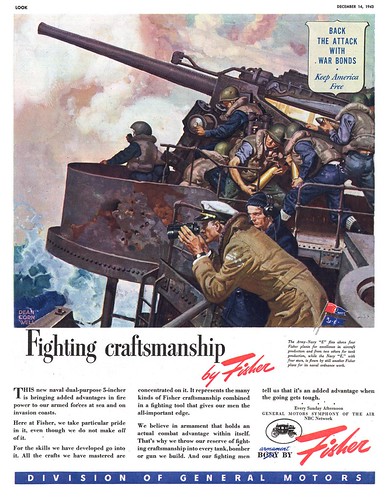
And those were not just hollow words. The Frank Reilly Art School brochure shows page after page of students who had gone on to successful careers.

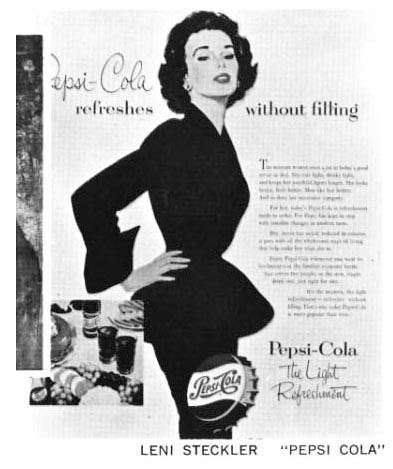
Kent Steine, the author of Step-by-Step magazine's 'Masters' series article on Frank Reilly tells me in a recent email, "Everyone I have ever talked with about Mr. Reilly, has a very deep and committed reverence for him. From my own teacher, to Doug Higgins, Jack Faragasso, Candy Rodriguez, Sol Korby, Jerry McConnell, Gerald Ellison, and James Bama, who attended during the time my teacher was there ('46-'49), all, credit Mr. Reilly for their success in art, and life."
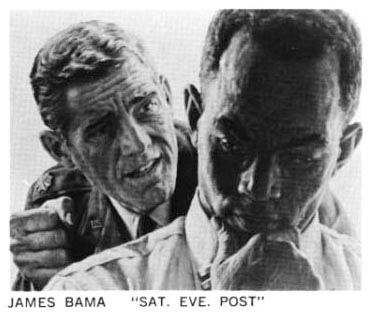
"They were more than just his students. . . they were like his children. As a matter of fact, during the days of ASL's Summer home at Woodstock (built by the CCC in the 30's), the students would spend days drawing, painting and picture making, and nights having cookouts and conversation with Mr. Reilly and his wife."
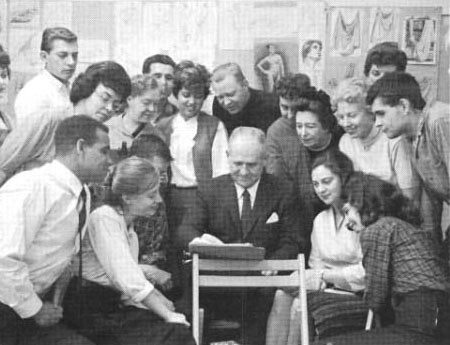
When I realized that Leonard Starr had attended Reilly's school, I asked David Apatoff if he would see about getting Mr. Starr to comment. David graciously sent back Mr. Starr's remarks:
"Reilly was the best teacher I ever saw-- the only one who was really worthy of the title, "teacher." My teachers at Pratt were all tired re-treads, who were interested in 2 dimensional design but couldn't teach you how to draw. They would walk around the room and remind you that the human hand has 5 fingers. I learned far more from the Famous Artists School training materials."

"Then one day when I was 27 I was talking with Dean Cornwell at the bar at the Society of Illustrators. I was already doing well as a professional artist but I still felt I had real gaps in my learning. Dean told me that he was "impressed with the work that Frank Reilly's kids are doing." So I went to Reilly and he took me on as a student."
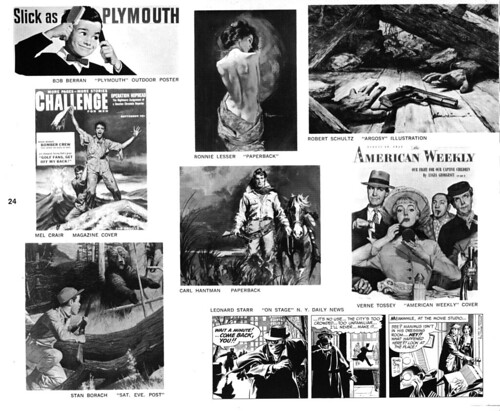
"Reilly taught that drawing was a matter of "relationships"-- from the neck to the hip bone, from the tip of the shoulder to the groin, he showed us how everything combined to make the figure come alive. Kids always start out making the figure lean to one side or the other, but Reilly showed us how to nail that figure down: "at least one of those legs must be supporting the weight of that body." He was just remarkable. I never left a class without learning something new. I wish he had been my teacher starting in high school, then I would really have been able to draw. He was better than George Bridgman (who Reilly dismissed as "an anatomist.") Unlike Bridgman, Reilly taught you in a way that made the anatomy naturally go where it was supposed to go."
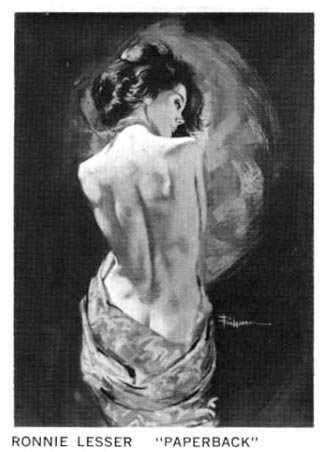
"When you are an art student, you always think you have made 100 mistakes. Reilly taught us that there are really only about ten mistakes. He would criticize just one student each session, but make everybody listen because we all made those ten mistakes, and we could all benefit from hearing the critique. Reilly used to say, "I can teach you the nuts and bolts, but I can't teach you to be creative. If you are creative, you will be able to put these nuts and bolts to work."
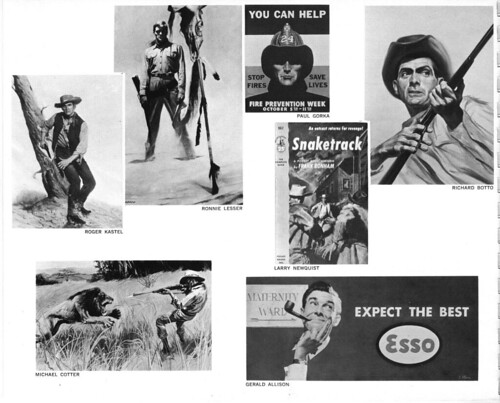
We began this week with some remarks from Doug Higgins, who was Frank Reilly’s drawing and painting monitor during the time he studied with Reilly in the 1960’s - and I'd like to return to Doug as we conclude this week's look at Frank Reilly:
"I was a student in the night class of his private school… the Frank Reilly School of Art in New York City," writes Doug.
"He would lecture on Tues. and Thurs. evenings. The lectures would start with something humorous and included many illustrations of the material on the blackboard. The next day at lunch hour… I was working as a low-level commercial artist at the Prudential Ins. Co. in Newark, NJ, I would carefully transcribe my lecture notes. After a year and a half or so my notebook was stolen out of my beat up old Corvette convertible in Manhattan’s Greenwich Village. They sliced through the plastic rear window. I was devastated but it turned out to be a benefit because when I began again I had a much better understanding of the information."

"For the first time in my life I became a dedicated student and came to believe that if I learned what he was teaching I would have a chance at a career in art. It was an honor and a great help financially when he appointed me monitor, first in the drawing and later in the painting class. A monitor paid no tuition, called the poses, kept order, started off new students and locked up the school."
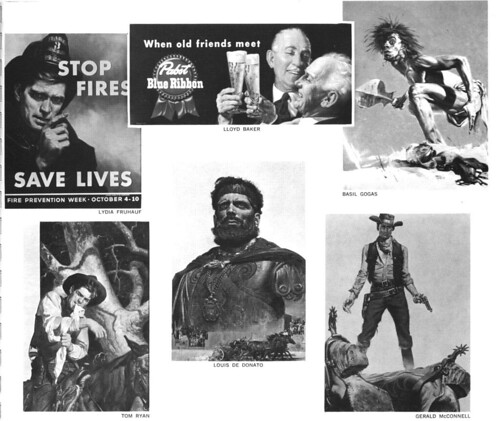
"I never missed a night in the over four years I was with him up until his untimely death. The night before he went into the hospital he said, "Well, good night, Hig." and I had to help him find his coat. I stood in the darkened hallway and watched him slowly walk to the elevator and disappear inside. I never saw him again and the only testaments I can offer are this book and the life he gave me that I have loved."
*My thanks to Tom Palmer, David Apatoff, Kent Steine and Doug Higgins for providing all the material for today's post.
My Frank Reilly Flickr set.
Frank Reilly articles were a lovely and interesting read, and Ken Riley' as well (Violent City' art is great).
ReplyDeletethanks for sharing that Leif!
"Reilly taught us that there are really only about ten mistakes."
ReplyDelete-Do any of Reilly's books teach these ten mistakes?
My father always credited Frank Reilly and Dean Cornwell with being influential in his work. I’m glad to see others giving Reilly his due.
ReplyDeleteFrank Reilly was not only a great teacher, he was a true inspiration to others. In the photo of Mr. Reilly demonstrating to his students, you will see my father (African American gentleman) in the front. My father became Mr. Reilly's friend, monitor, and assistant. I attended Mr. Reilly's funeral. I was just a baby at the time.
ReplyDeleteI have many stories to share along with photographs. I plan to share them shortly.